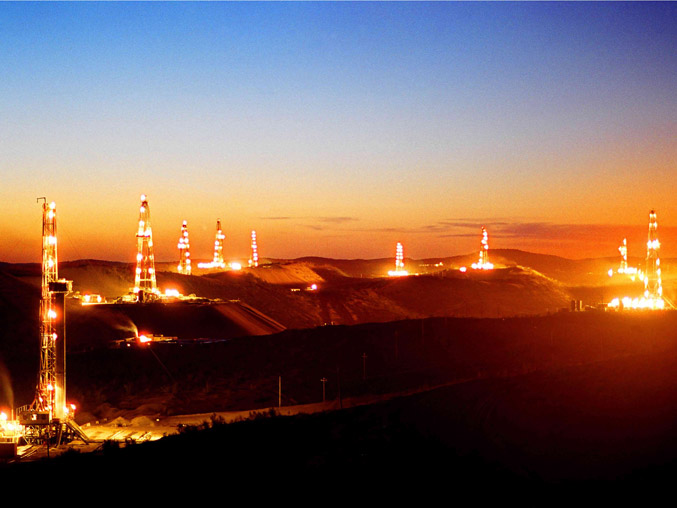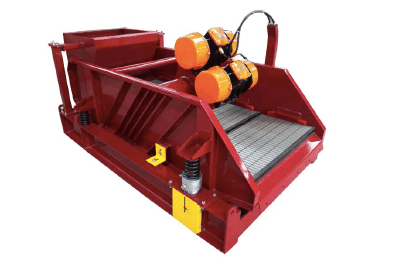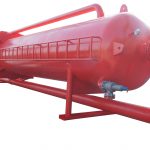The Drilling Mud problems that were encountered and noticed are the following:
Bit balling:
A. Indications:
- Reduction in penetration rate as the bit cuttings face is totally wrapped with cake.
- Decrease in torque values and then stabilized.
- Decrease in torque values and then stabilized.
- Blocked shaker screens with the soft clays.
- Over pull on trips.
B. Cause:
- Improper mud properties.
- Types of formation that causes the bit balling (clay).
- High values of ROP.
- Shale hydration and swelling.
- Poorly inhibited water base mud when drilling shale and claystone particles, but mostly in shale due to its rich montmorillonite, which adhere to the surface of drill bits, stabilizers and drill collars.
C. Treatment:
- Bottom off and pumping with high flow rate, high RPM, and working pipe.
- Adjustment of mud properties.
- Usage of an inhibitive mud system to prevent the dispersion of the clay plates.
- Use of a detergent to disperse the balled clays.
- Using glycol or a lubricant to reduce bit balling.
- Usage of limited WOB in formations of expected bit balling problem.
It should be advised that in case of oil base mud, the treatment for oil base mud is to increase the mud salinity to absorb the water from the shale and increase its hardness.

Bit washout:
A. Indications:
- Sudden decrease in pump pressure.
- Probably high values of torque.
B. Causes:
1. Loss of one or more of the bit nozzles due to the:
- Bad snap ring setting.
- Bad bit manufacturing.
- Inappropriate setting of the nozzles in place by the workers.
2. Due to the high values of flow rates.
C. Treatment:
Pulling out of hole is advised, the nozzle or sometimes the bit should be changed.
Drilling on Junk:
A. Indications:
- High values of torque.
- Reduction of the ROP gradually until zero value is reached.
B. Cause:
Probably there is a fish inside the hole such as bit nozzle, hammer, dice, chain … etc.
C. Treatment:
Pulling out of hole and checking is the action to be taken in this situation.
Plugged nozzle:
A. Indications:
- Sudden increase and then stabilization in pump pressure values.
- Reduction in ROP.
- Reduction in return flow rate.
B. Causes:
- Bad mud properties due to bad mixing or bad mixing procedures.
- No strainer for mud pump and suction line is installed.
C. Treatment:
- The string should be pulled inside the casing and pumping should be tried with high flow rate, and working pipe continuously with bleed off line connected to the shale shaker and centrifugal pump shut off (if there is a non-return valve, bleeding off cannot be done unless a ported type is used).
- If the above treatment wasn’t successful, pulling out of the hole and checking is advised.
Tight hole:
A. Indications:
- Increased torque values.
- Higher pump pressure.
- Over pull.
- ROP variation: it is divided into two types on which the type of tight hole can be
determined by:- Reduction in ROP value: this is a sign of clay bed swelling.
- ROP value remains constant: this is a sign of heaving and bridges.
B. Causes:
- Clay bed swelling.
- Heaving and bridges.
- Plastic bed movement.
- Low mud density.
- High values of filtration rate.
C. Treatment:
- Decreasing filtration rate.
- Short trip process.
- Use of a lubricant to the mud to facilitate pipe movement.
- Increasing mud density.
- Increasing mud salinity to absorb the moisture out of the clay and increase their hardness.
- Using the jar.
- Using stuck breaker in case the string got stuck.
Two important notes should be stated here:
- 1. In case of salt section, the treatment is spotting a fresh water pill in front of the salt formation to wash it out and free the drill string.
- In case of marl or limestone, spotting an acid pill is helpful in freeing the pipe.
Sloughing:
A. Indications:
- Increase values of pump pressure.
- Drill string dragging.
- Reduction in penetration rate.
- Variation in mud properties.
- Increase in cuttings and cutting sizes on shale shaker.
B. Causes:
- When drilling in shale or loose sand and gravel beds.
- Fast up and down pipe movement.
- Low mud density.
- High filtration rate.
- High annular velocity.
- Hole deviation.
C. Treatment:
- Slow pipe up and down movement speed.
- Decreasing filtration rate.
- Increasing mud weight and viscosity.
- Using shale stabilizing material.
- Usage of glycol mud or KCl polymer.
- Turning to oil base mud as a last choice to prevent shale hydration.
Under gauge:
A. Indications:
- Reduction in penetration rate.
- Increase in torque values, due to the fact that the stabilizers will work as hole openers.
B. Causes:
1. Hard and abrasive formations.
2. Inappropriate bit selection.
C. Treatment
- The bit should be changed.
- The previous section of the hole must be reamed.
Key seating:
A. Indications:
- High values of torque.
- Over pull while tripping out.
B. Causes:
- Heterogeneous nature of rocks.
- Improper drilling parameters (WOB, RPM).
- Dog leg.
C. Treatment:
- Use of a key seat wiper.
- Short trip process.
Tight hole due to differential pressure:
A. Indications:
- Torque and drag values increase.
- Not being able to move the drill string.
- Uninterrupted circulation of drilling fluid.
B. Causes:
- Unnecessary high differential pressure.
- Thick mud cake (high filtration rate).
- Long connection time.
- High permeability and porosity media.
- Hole deviation.
C. Treatment:
- Proper mud characteristics (density and filtration rate).
- Use of a spiral or square collar shape.
- Keeping the drilled solids low in the mud.
- Maintain the rotation of the drill string.
- Use of stuck breaker.
- Use of the jar method.
- Slacking down the string in case a stuck have happened.
Hole cleaning:
A. Indications:
- Increase in pump pressure.
- Decrease in the rate of penetration.
- Increase in drag values.
B. Causes:
- Insufficient flow rate.
- Hole inclination.
- High values of penetration rate.
- Inadequate mud properties (plastic viscosity and yield point).
- Characteristics of cuttings.
C. Treatment:
- Circulation and rotation with low RPM.
- Mud conditioning.
- Checking the shale shaker.
Mud loss:
A. Indications:
- Decrease in pump pressure.
- Mud return will not equalize the mud entering the well.
B. Causes:
- Usage of dense mud.
- Fast downward pipe movement (effect of surge pressure).
- Bit balling.
- Pumping with high flow rate after tripping.
- High viscosity of the mud.
- Using the choke to adjust the pressures.
- Lack of solids control activity which leads to dense mud and mud loss problems.
- Porous bed with large particles such as loose sand and gravels.
- Caving bed which usually.
- Normally fractured zone.
C. Treatment:
- Pull out the drill string inside casing, fill the hole and check.
- Maintain a proper mud weight.
- Controlling the viscosity and gel strength.
- Slower run in pipe moving to reduce piston effect.
- Set casing to protect weaker formations.
- Treat mud with Loss Circulation Material (LCM).
- Minimize annular friction pressure (decrease plastic viscosity and yield point).
- In weaker formations, it is recommended to:
- Minimize pump pressure and flow rates.
- Use of bits without nozzles and strings without stabilizers to avoid plugging the bit.
- Rotation of the drill string with low flow rate after tripping to break the gel, and then increasing it gradually until reaching the required flow rate is necessary.
- Cement plug.
In addition, in case of cement plug failure, it is recommended to reinforce plugs and cement.
- Oil bentonite plug.
- Water/Organophilic clay plug.
Pipe washout:
A. Indications:
A slight decrease in pump pressure.
B. Causes:
- Use of improper make up torque.
- Presence of corrosive materials in the drilling mud or inside the formation.
- Non Destructive Test (NDT) might have been performed carelessly. The drill pipe should be inspected to (API RP7G), and the drill collar and heavy weight drill pipe should be inspected to (DSCAT3).
C. Treatment:
Pulling out of hole and checking for the damaged pipe.

Related paper: Drilling Problems Detection and treatment with smart phone







